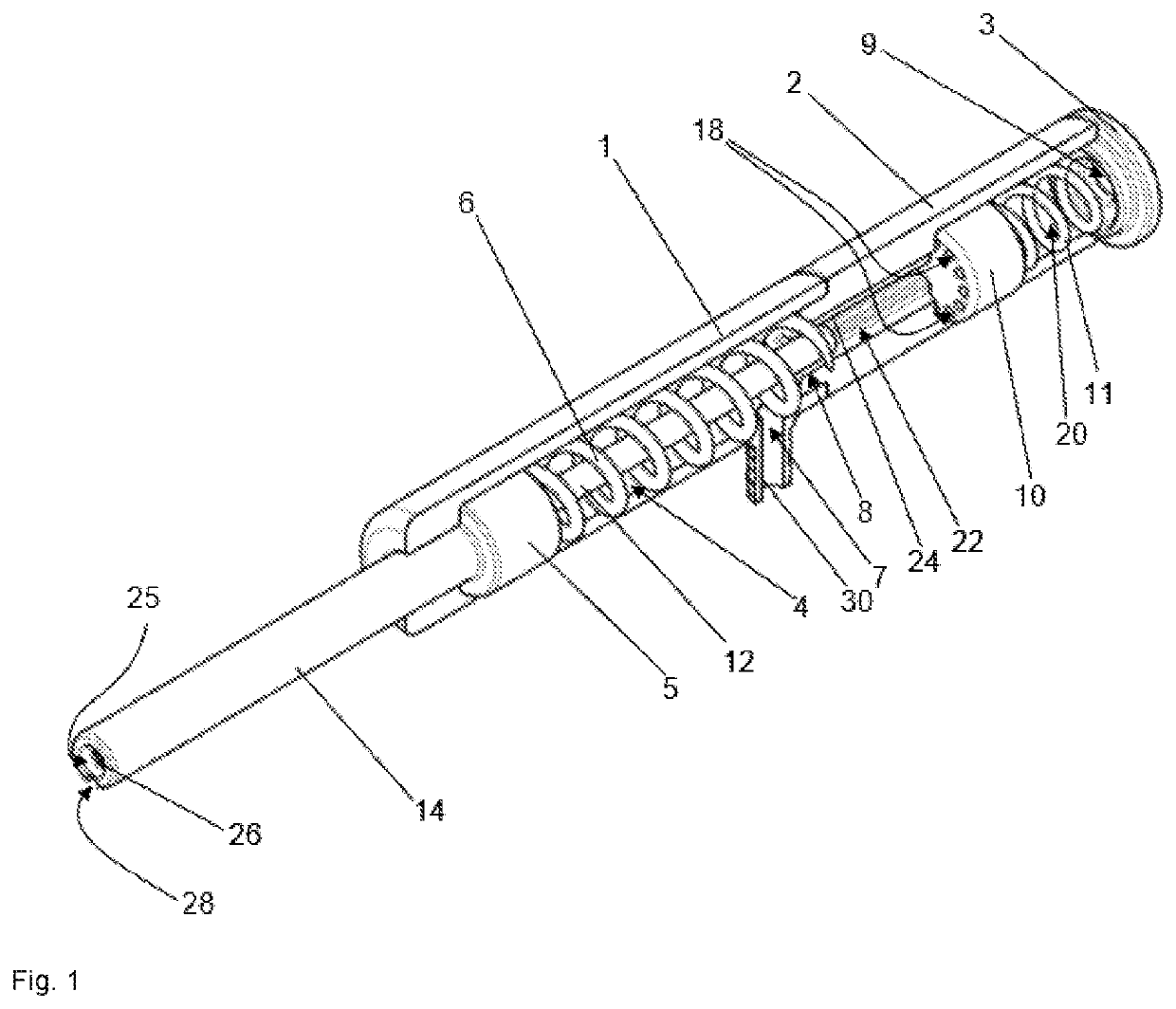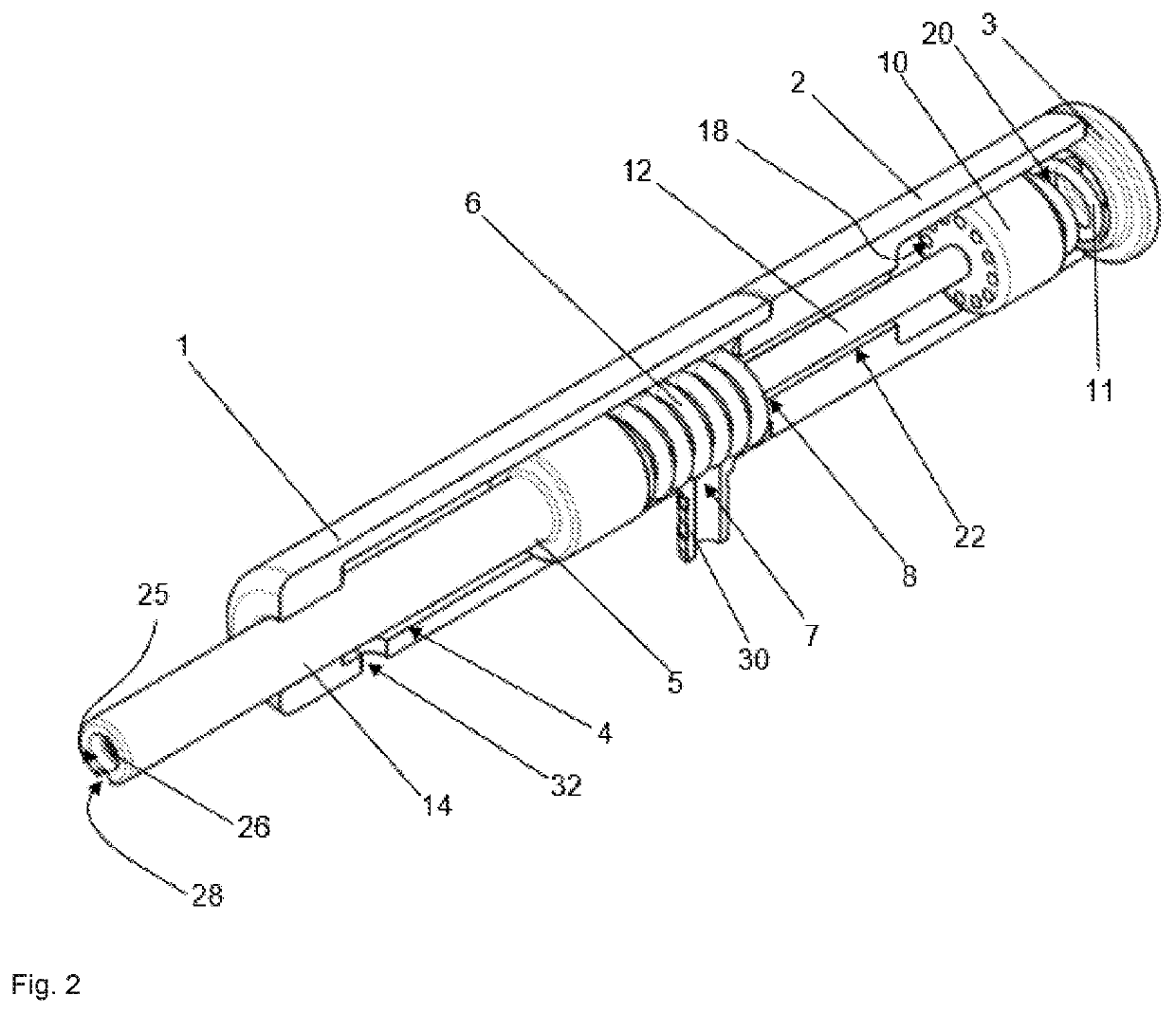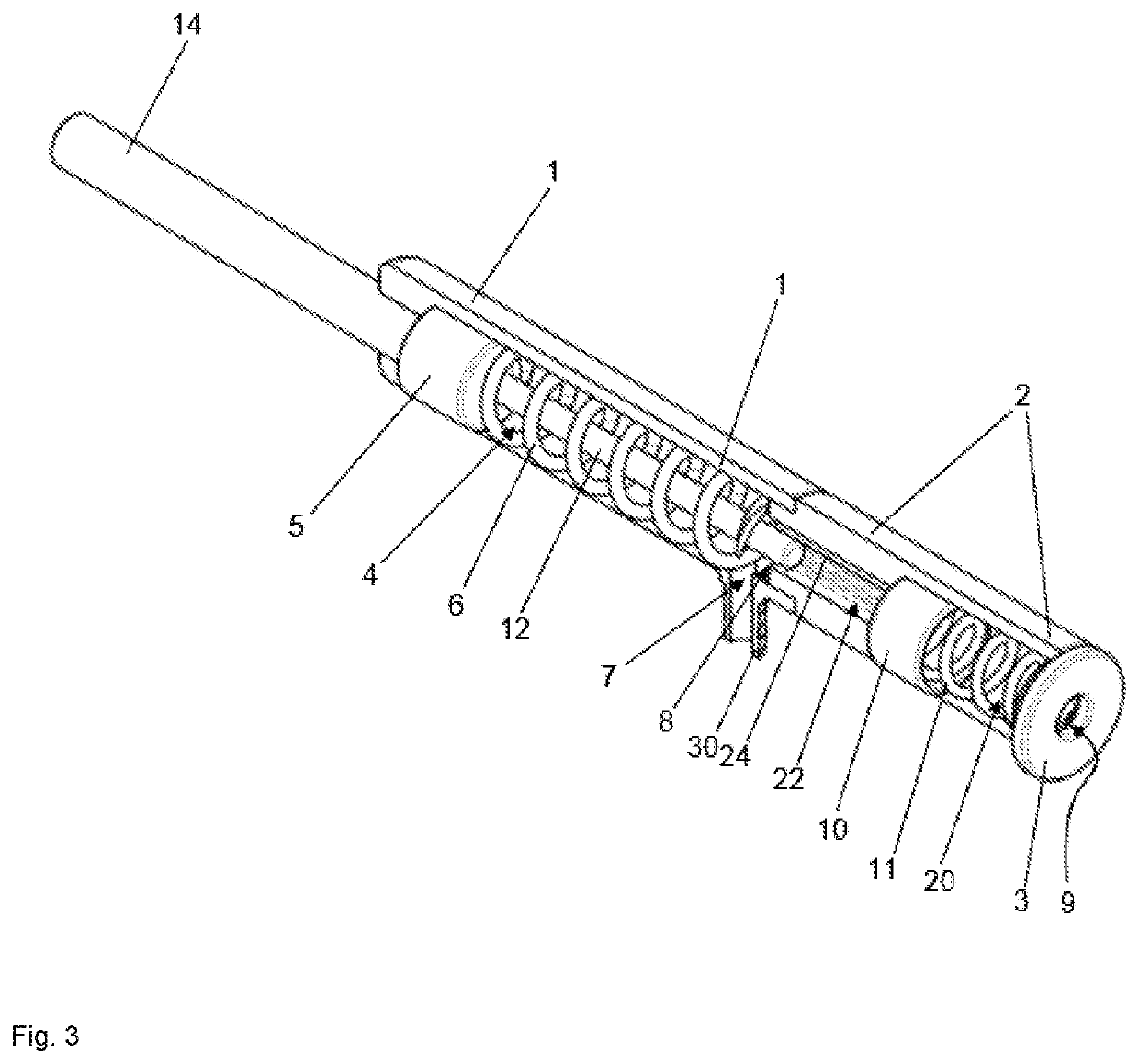Vacuum Motor, Surgical Drive System, And Method For Operating A Vacuum Motor
- Summary
- Abstract
- Description
- Claims
- Application Information
AI Technical Summary
Benefits of technology
Problems solved by technology
Method used
Image
Examples
Embodiment Construction
[0143]FIGS. 1 to 6 show depictions of a vacuum motor according to the invention. FIGS. 7 to 10 show a surgical drive system according to the invention with a vacuum motor of this type, as the one shown in FIGS. 1 to 6. The front side of the vacuum motor and of the surgical drive system and thus the equally oriented front sides of the parts of the vacuum motor and of the surgical drive system are shown on the left front in FIGS. 1, 2, 6, 7, and 10 to 12 (projecting out of the image plane in the direction of the observer), on the left back in FIG. 3 (into the image plane, away from the observer), on the left in FIGS. 4, 5, and 8, and also on the left in FIG. 9, whereby the front end is not shown in FIG. 9. Accordingly, the front side is basically oriented in the direction of the left side in the depictions. While one also views the front sides of the vacuum motor and of the surgical drive system in FIGS. 1, 2, 6, 7, and 10 to 12, FIG. 3 shows the rear side of the vacuum motor.
[0144]Th...
PUM
 Login to View More
Login to View More Abstract
Description
Claims
Application Information
 Login to View More
Login to View More - R&D
- Intellectual Property
- Life Sciences
- Materials
- Tech Scout
- Unparalleled Data Quality
- Higher Quality Content
- 60% Fewer Hallucinations
Browse by: Latest US Patents, China's latest patents, Technical Efficacy Thesaurus, Application Domain, Technology Topic, Popular Technical Reports.
© 2025 PatSnap. All rights reserved.Legal|Privacy policy|Modern Slavery Act Transparency Statement|Sitemap|About US| Contact US: help@patsnap.com



